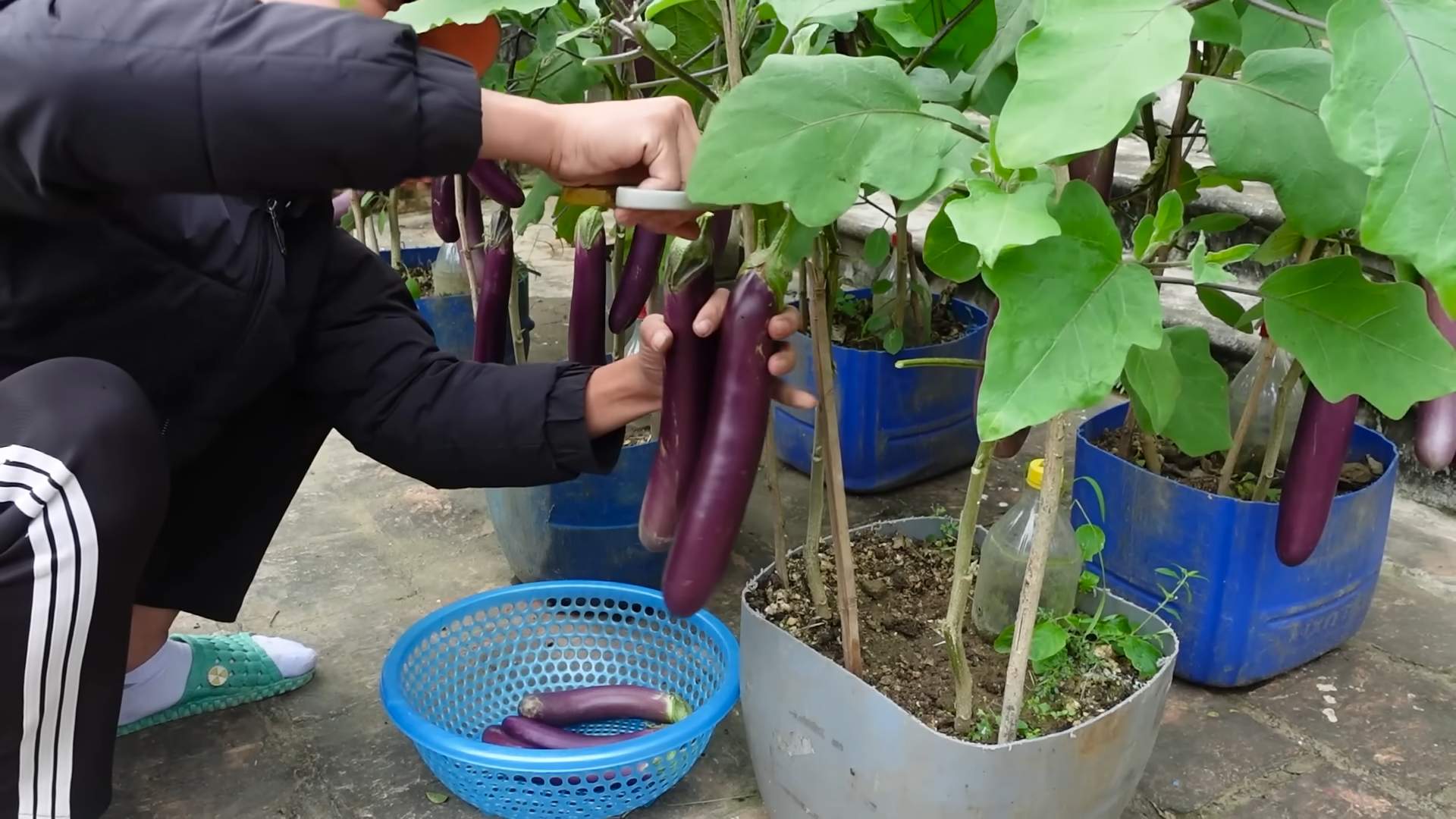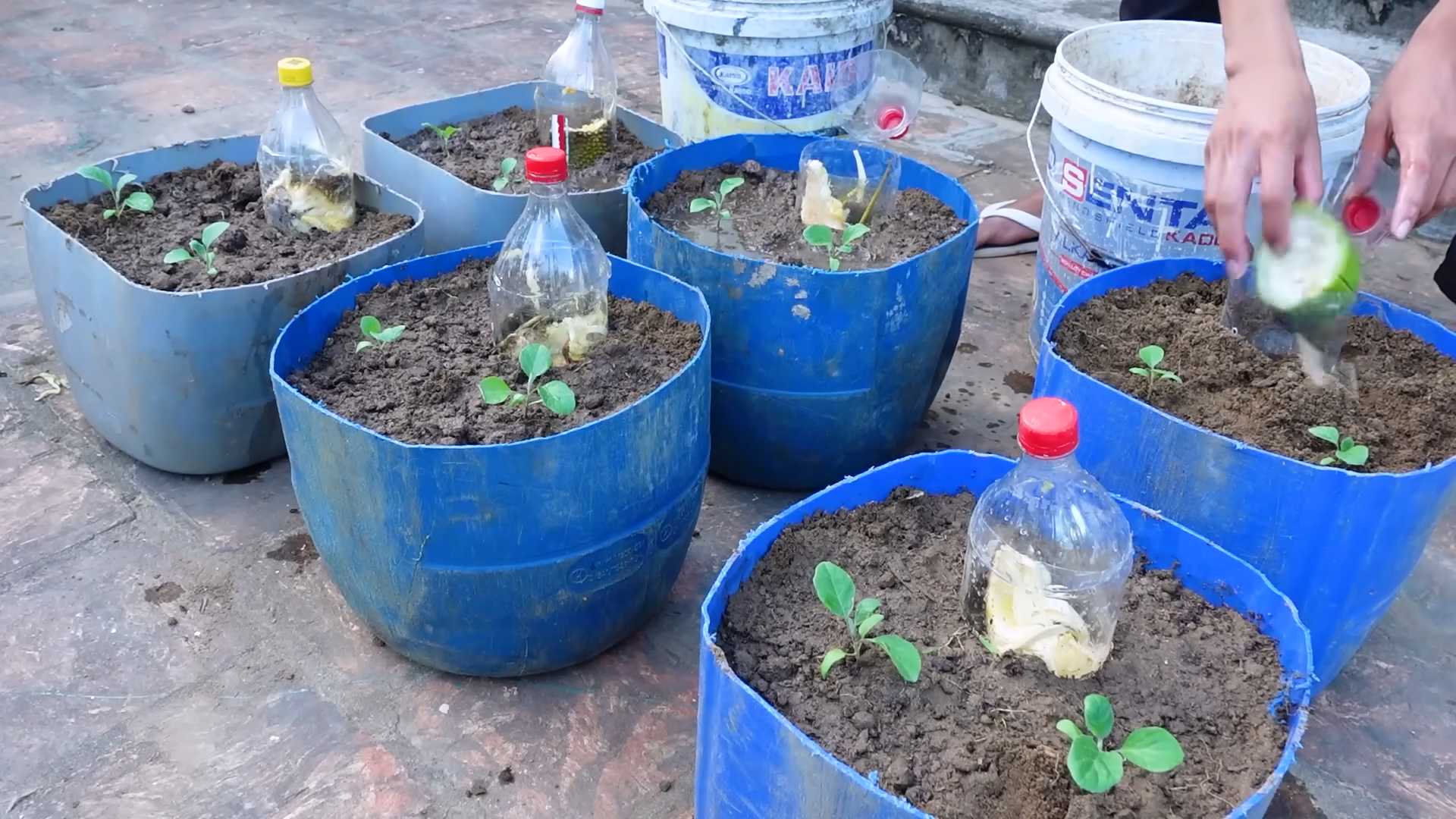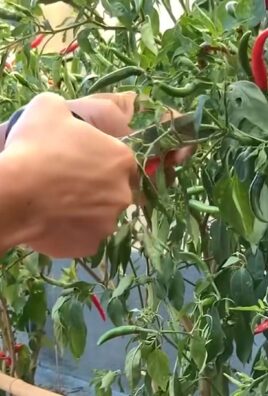Grow Eggplants Indoors? Absolutely! Imagine plucking fresh, vibrant eggplants right from your own home, even when the weather outside is frightful. It’s not just a dream; it’s an achievable reality with the right know-how. For centuries, gardeners have sought ways to extend growing seasons and cultivate their favorite plants regardless of external conditions. From ancient Roman greenhouses to modern-day hydroponics, the desire to nurture life indoors has always been strong.
But why should you bother learning to grow eggplants indoors? Well, for starters, it gives you complete control over the growing environment. No more battling unpredictable weather, pesky pests, or nutrient-depleted soil. Plus, it’s incredibly rewarding to nurture a plant from seed to harvest, especially when you get to enjoy the delicious fruits (or, in this case, vegetables!) of your labor. I’m excited to share some simple yet effective DIY tricks and hacks that will empower you to successfully grow eggplants indoors, regardless of your gardening experience. Let’s get started!

Growing Eggplants Indoors: A Comprehensive DIY Guide
Hey there, fellow plant enthusiasts! Ever dreamed of enjoying fresh, homegrown eggplants even when the weather outside is frightful? Well, you’re in luck! Growing eggplants indoors is totally achievable, and I’m here to guide you through every step of the process. It might seem a little daunting at first, but trust me, with a little patience and the right know-how, you’ll be harvesting your own delicious eggplants in no time.
What You’ll Need: The Essential Supplies
Before we dive into the nitty-gritty, let’s gather our supplies. Having everything on hand will make the whole process smoother and more enjoyable. Here’s what you’ll need:
* Eggplant Seeds: Choose a variety that’s well-suited for container gardening. Smaller varieties like ‘Patio Baby’ or ‘Fairy Tale’ are excellent choices.
* Seed Starting Trays or Small Pots: These will be your eggplant seedlings’ first homes.
* Seed Starting Mix: This is a light, sterile mix that’s perfect for delicate seedlings. Don’t use regular potting soil for starting seeds.
* Larger Pots (5-10 Gallon): Once your seedlings are big enough, they’ll need to be transplanted into larger pots to accommodate their growth.
* High-Quality Potting Soil: Choose a well-draining potting mix that’s rich in organic matter.
* Grow Lights: Eggplants need a lot of light, so grow lights are essential for indoor growing, especially during the shorter days of winter.
* Fertilizer: A balanced fertilizer (like 10-10-10) or one specifically formulated for tomatoes and vegetables will provide your eggplants with the nutrients they need.
* Watering Can or Spray Bottle: For gentle watering.
* Small Fan: To provide air circulation and prevent fungal diseases.
* Optional: Heat mat for seed germination, stakes or cages for support.
Phase 1: Starting Your Eggplant Seeds
This is where the magic begins! Getting your seeds started right is crucial for a successful eggplant harvest.
1. Sow the Seeds: Fill your seed starting trays or small pots with seed starting mix. Moisten the mix thoroughly, but don’t let it get soggy. Sow the eggplant seeds about ¼ inch deep, placing 2-3 seeds in each cell or pot. Gently cover the seeds with more seed starting mix.
2. Provide Warmth: Eggplant seeds need warmth to germinate. The ideal temperature is between 80-90°F (27-32°C). You can use a heat mat to maintain this temperature. If you don’t have a heat mat, place the trays in a warm spot in your house, like near a radiator or on top of your refrigerator.
3. Maintain Moisture: Keep the seed starting mix consistently moist, but not waterlogged. You can use a spray bottle to gently mist the surface of the soil. Cover the trays with a clear plastic dome or plastic wrap to help retain moisture.
4. Wait for Germination: Eggplant seeds can take anywhere from 7-14 days to germinate, so be patient. Once the seedlings emerge, remove the plastic dome or wrap and place the trays under grow lights.
5. Thin the Seedlings: Once the seedlings have their first true leaves (the second set of leaves that appear after the initial seed leaves), thin them out by snipping off the weaker seedlings at the soil line. Leave only the strongest seedling in each cell or pot.
Phase 2: Nurturing Your Seedlings
Now that your seedlings have sprouted, it’s time to give them the care they need to grow strong and healthy.
1. Provide Adequate Light: Eggplant seedlings need at least 12-16 hours of light per day. Position your grow lights about 2-4 inches above the seedlings. As the seedlings grow, you’ll need to adjust the height of the lights to keep them close to the plants.
2. Water Regularly: Water the seedlings when the top inch of soil feels dry to the touch. Be careful not to overwater, as this can lead to root rot.
3. Fertilize Gently: Once the seedlings have been growing for a few weeks, you can start fertilizing them with a diluted balanced fertilizer. Follow the instructions on the fertilizer label.
4. Provide Air Circulation: Good air circulation is important for preventing fungal diseases. Place a small fan near the seedlings to gently circulate the air.
5. Harden Off the Seedlings (Optional): If you plan to move your eggplants outdoors at some point, you’ll need to harden them off first. This involves gradually exposing them to outdoor conditions over a period of 1-2 weeks. Start by placing them outside for a few hours each day in a sheltered location, gradually increasing the amount of time they spend outdoors.
Phase 3: Transplanting to Larger Pots
Once your seedlings have grown to a decent size (about 4-6 inches tall) and have a few sets of true leaves, it’s time to transplant them into larger pots.
1. Prepare the Pots: Fill your 5-10 gallon pots with high-quality potting soil. Make sure the pots have drainage holes.
2. Carefully Remove the Seedlings: Gently remove the seedlings from their seed starting trays or small pots. Be careful not to damage the roots.
3. Transplant the Seedlings: Dig a hole in the center of each pot that’s large enough to accommodate the root ball of the seedling. Place the seedling in the hole and gently backfill with potting soil.
4. Water Thoroughly: Water the newly transplanted seedlings thoroughly.
5. Provide Support (Optional): Eggplants can get quite tall and heavy, so you may want to provide them with support in the form of stakes or cages.
Phase 4: Caring for Your Mature Eggplants
Now that your eggplants are in their final pots, it’s time to provide them with the ongoing care they need to thrive and produce fruit.
1. Light, Light, Light!: Eggplants need at least 6-8 hours of direct light per day. If you’re growing them indoors, you’ll need to provide them with strong grow lights. Keep the lights close to the plants, adjusting the height as they grow.
2. Watering: Water your eggplants regularly, keeping the soil consistently moist but not waterlogged. Check the soil moisture regularly and water when the top inch feels dry.
3. Fertilizing: Fertilize your eggplants every 2-3 weeks with a balanced fertilizer or one specifically formulated for tomatoes and vegetables. Follow the instructions on the fertilizer label.
4. Temperature: Eggplants prefer warm temperatures, ideally between 70-85°F (21-29°C). Avoid exposing them to temperatures below 60°F (15°C).
5. Pollination: Eggplants are self-pollinating, but they may need a little help indoors. You can hand-pollinate them by gently shaking the plants or using a small paintbrush to transfer pollen from one flower to another. A gentle fan breeze can also help.
6. Pruning: Pruning can help improve air circulation and encourage fruit production. Remove any yellowing or dead leaves. You can also prune away some of the suckers (small shoots that grow from the base of the plant) to encourage the plant to focus its energy on fruit production.
7. Pest and Disease Control: Keep an eye out for pests like aphids, spider mites, and whiteflies. You can control these pests with insecticidal soap or neem oil. Also, watch out for fungal diseases like powdery mildew. Good air circulation and proper watering can help prevent these diseases.
Phase 5: Harvesting Your Eggplants
The moment you’ve been waiting for! Harvesting your own homegrown eggplants is incredibly rewarding.
1. When to Harvest: Eggplants are typically ready to harvest about 60-80 days after transplanting. The fruit should be firm, glossy, and have a deep, rich color. The skin should be smooth and unblemished.
2. How to Harvest: Use a sharp knife or pruning shears to cut the eggplant from the plant. Leave about an inch of stem attached to the fruit.
3. Enjoy Your Harvest: Enjoy your fresh, homegrown eggplants in your favorite recipes! They’re delicious grilled, roasted, fried, or used in dishes like eggplant parmesan and ratatouille.
Troubleshooting: Common Issues and Solutions
Even with the best care, you might encounter some challenges along the way. Here are some common issues and how to address them:
* Seedlings Not Germinating: Make sure the soil is warm enough and consistently moist. Try using a heat mat.
* Leggy Seedlings: This means your seedlings aren’t getting enough light. Move

Conclusion
So, there you have it! Growing eggplants indoors might seem like a daunting task, but with a little patience, the right setup, and this simple DIY trick, you can enjoy fresh, homegrown eggplants even without a sprawling garden. This method offers a fantastic way to extend your growing season, protect your plants from unpredictable weather and pests, and ultimately, savor the unique flavor of homegrown produce.
Why is this DIY trick a must-try? Because it simplifies the process, making indoor eggplant cultivation accessible to everyone, regardless of their gardening experience. It addresses common challenges like pollination and space constraints, providing practical solutions that yield impressive results. Plus, there’s immense satisfaction in nurturing a plant from seed to harvest, knowing you played an active role in bringing fresh, delicious food to your table.
Don’t be afraid to experiment with variations! Try different eggplant varieties to discover your favorites. Some smaller, bushier varieties are particularly well-suited for indoor growing. Consider using different types of grow lights to see which provides the best results for your specific setup. You can also explore different potting mixes to find the perfect balance of drainage and nutrient retention. Perhaps you want to try a hydroponic setup for growing eggplants indoors, which can be a fun and rewarding project.
We encourage you to embrace this DIY adventure and discover the joys of growing eggplants indoors. It’s a rewarding experience that connects you with nature and provides a sustainable source of fresh produce. Once you’ve tried it, we’d love to hear about your experience! Share your tips, successes, and challenges in the comments below. Let’s build a community of indoor eggplant enthusiasts and learn from each other. Happy growing!
Frequently Asked Questions (FAQ)
Q: What is the best eggplant variety to grow indoors?
A: While many eggplant varieties can be grown indoors, smaller, more compact varieties tend to be the most successful. Look for bush-type eggplants like ‘Patio Baby,’ ‘Fairy Tale,’ or ‘Little Fingers.’ These varieties are bred to be more manageable in containers and produce a good yield in a smaller space. Larger varieties can still be grown, but they may require more support and a larger pot. Consider the size of your growing area and the amount of light available when selecting your eggplant variety.
Q: How much light do indoor eggplants need?
A: Eggplants are sun-loving plants and require a significant amount of light to thrive. Ideally, they need at least 6-8 hours of direct sunlight per day. If you don’t have a sunny window that provides this much light, you’ll need to supplement with grow lights. LED grow lights are a great option as they are energy-efficient and provide the full spectrum of light that plants need. Position the grow lights about 6-12 inches above the plants and adjust as they grow. Insufficient light can lead to leggy growth, poor fruit production, and overall weak plants.
Q: What type of soil is best for growing eggplants in containers?
A: Eggplants need well-draining soil that is rich in organic matter. A good potting mix for eggplants should consist of a blend of peat moss, perlite, and vermiculite. You can also add compost or aged manure to improve the soil’s fertility and drainage. Avoid using garden soil, as it can be too heavy and compact, which can lead to root rot. The ideal pH level for eggplant soil is between 6.0 and 6.8.
Q: How often should I water my indoor eggplants?
A: Water your eggplants regularly, keeping the soil consistently moist but not waterlogged. Check the soil moisture level by sticking your finger about an inch into the soil. If it feels dry, it’s time to water. Water deeply, allowing the water to drain out of the bottom of the pot. Avoid overhead watering, as this can promote fungal diseases. During hot weather, you may need to water more frequently.
Q: How do I pollinate my indoor eggplants?
A: Since there are no bees or other pollinators indoors, you’ll need to hand-pollinate your eggplants. This is a simple process that involves transferring pollen from the male part of the flower (the stamen) to the female part (the pistil). You can use a small paintbrush or cotton swab to gently collect pollen from the stamen and then brush it onto the pistil. You can also gently shake the plant to help release pollen. Repeat this process every day for several days to ensure successful pollination.
Q: What are some common pests and diseases that affect indoor eggplants?
A: Common pests that can affect indoor eggplants include aphids, spider mites, and whiteflies. These pests can be controlled with insecticidal soap or neem oil. Fungal diseases, such as powdery mildew and blossom-end rot, can also be a problem. To prevent these diseases, ensure good air circulation, avoid overhead watering, and provide adequate calcium to the plants.
Q: How long does it take for eggplants to mature and produce fruit?
A: Eggplants typically take 60-80 days to mature and produce fruit after transplanting. The exact time will depend on the variety, growing conditions, and the size of the plant. Be patient and continue to provide the plants with proper care, and you’ll eventually be rewarded with delicious, homegrown eggplants.
Q: Can I grow eggplants indoors year-round?
A: Yes, you can grow eggplants indoors year-round, provided you have the right setup. This includes providing adequate light, temperature, and humidity. You may need to adjust your watering and fertilizing schedule depending on the season.
Q: What kind of fertilizer should I use for indoor eggplants?
A: Eggplants are heavy feeders and require regular fertilization. Use a balanced fertilizer with a ratio of 10-10-10 or 14-14-14. You can also use a fertilizer specifically formulated for tomatoes or vegetables. Fertilize your eggplants every 2-3 weeks during the growing season.
Q: How do I know when my eggplants are ready to harvest?
A: Eggplants are ready to harvest when they are firm, glossy, and have reached their mature size. The skin should be smooth and unblemished. Gently press the skin of the eggplant; if it springs back, it’s ready to harvest. Use a sharp knife or pruning shears to cut the eggplant from the plant, leaving a small stem attached.




Leave a Comment